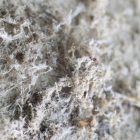Photo by vvoennyy On Envato Elements
Do you have concerns about the possible presence of mold in your household?
Mold not only has the potential to cause severe illness and exacerbate allergies, but it can also be fatal.
This is especially true for certain types of mold, like black mold, which can shut down organs and weaken the immune system. Given the grave risks associated with mold, it is crucial to prioritize mold remediation.
If you have concerns about the potential presence of mold in your house, it is important to read this information. We will reveal the top five indicators of mold and guide how to identify them in your home.
Now is the moment to find the mold inside your house and start a strong line of defense!
1. An Odor of Dampness and Mustiness
Do you detect a damp odor in your house? The presence of mold can emit a musty and wet smell, similar to the scent of old books. However, this smell is not always a definitive sign of mold as different types of mold can have varying levels of odor strength. While some may have a strong smell, others may not be as pungent.
The scent of mold may vary depending on the type of surface it is found on. For instance, mold found on a clean and dry surface, like a door frame, may not emit any noticeable odor. However, if mold is growing on an aged carpet, it is likely to have a stronger and more offensive smell.
2. The Progression or Deterioration of Allergic Reactions
Have you observed an increase in coughing or sneezing? Have you also experienced an itchy throat or a consistently runny nose?
These indications suggest that the existence of mold could potentially be a factor in the onset or exacerbation of allergies. It is a fact that certain individuals are more susceptible to the effects of mold than others. These individuals are likely to experience a continual aggravation of their allergies due to mold. However, even those without preexisting allergies may experience allergy-like symptoms due to mold exposure.
3. A Basic Apparent Look
Naturally, observing mold with unaided vision is a straightforward method for identifying its presence. It is crucial to keep in mind that mold can manifest in various visual forms. Each type of mold is associated with a unique cause and varying degrees of severity.
The common type of mold we typically observe on natural substances like food and trash is the simplest form of mold. It flourishes in damp places like basements and bathrooms.
Black mold is a frequently encountered variety of mold. Although the severity may vary, this particular type of mold can pose serious health risks. It typically appears as a mixture of green and black mold in places that have been impacted by water damage.
4. Identifying Water Damage and Leaks
It is not unexpected that mold tends to flourish in damp and moist surroundings. If there is a leak from a pipe, toilet, or roof, the extra moisture can eventually lead to mold growth. Unfortunately, these areas are often neglected, allowing the mold to spread and worsen.
In warm and damp conditions, this issue persists and continues to grow. To combat it, experts suggest that homeowners maintain indoor humidity at or below 60 percent. Maintaining temperatures below 60 degrees creates a dry environment that is less conducive to mold growth.
One of the most frequent causes of mold growth is previous water damage experienced within the household. Even if the water damage occurred many years ago, there is still a chance for mold to develop. It is important to keep in mind that mold can persist and remain a problem for a long time.
5. Personal Health Symptoms
The intensity of mold and one’s susceptibility to it can differ, as we are aware.
Though regular mold can exacerbate allergies, more severe types of mold can greatly impact a person’s well-being. This can manifest as skin irritation, fatigue, consistent nausea, and significant cognitive impairment.
A frequent response to mold is the development of a respiratory problem, such as asthma. In a mold-infected home, individuals are 40% more prone to developing asthma, according to the EU Healthy Homes Barometer 2017.
It is strongly advised to undergo a residential mold inspection and make an appointment with your doctor if you experience any of these symptoms.
Detecting Mold in Your Home
Preventing mold from forming in your home may seem like an arduous task. In reality, finding a mold-free home would be quite difficult. Nevertheless, this does not mean that the presence of mold should be accepted and encouraged.
Although mold may not be visible to the naked eye, there are alternative methods for detecting its presence. These can include observing the smell and experiencing allergic reactions, as well as identifying water leaks and condensation, all of which can be indications of mold growth.
If there is a suspicion of mold in your home, it is crucial to address it promptly. Ignoring the problem can lead to mold spreading and potentially affecting your well-being and safety without proper treatment.
If you are thinking about residential mold remediation, please visit our website for information or contact us at 214-477-5902





